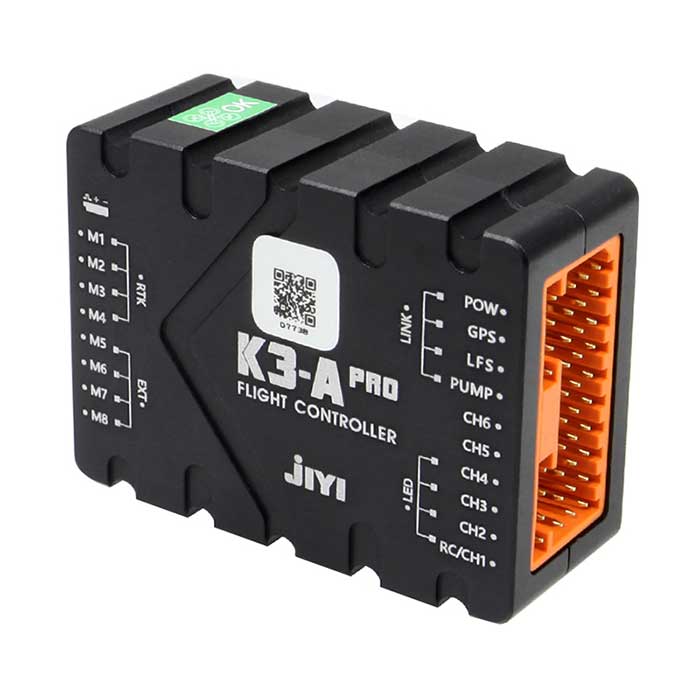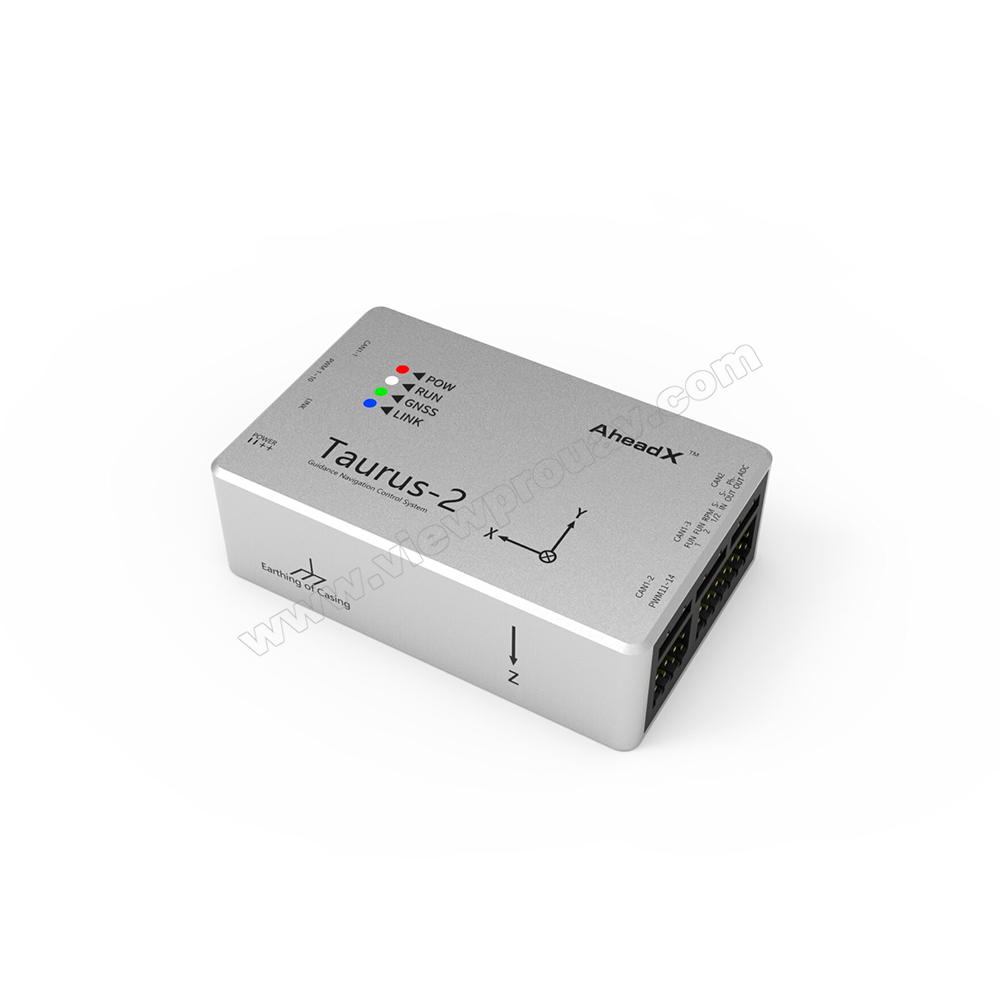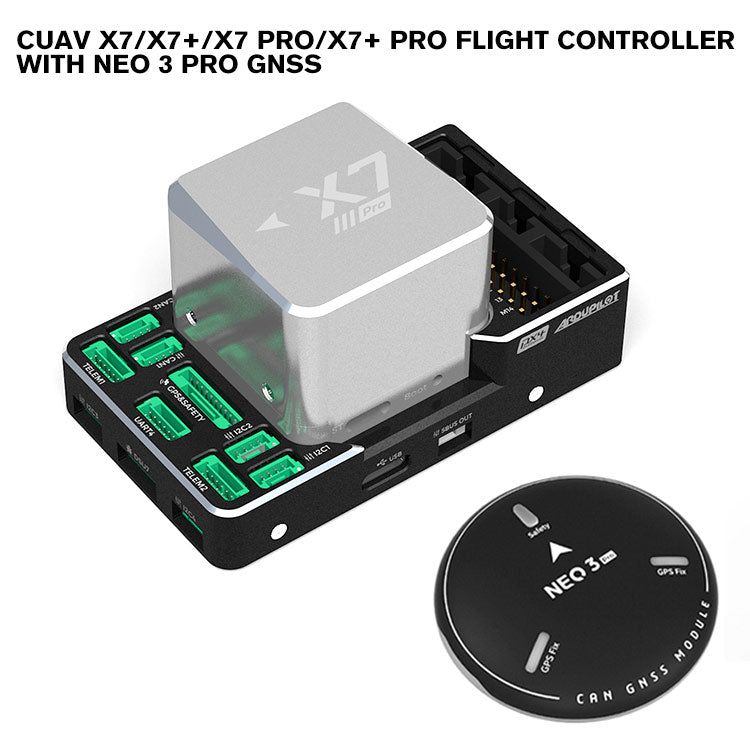SparkNavi Drone Flight Controller and GNSS/INS Made in Taiwan: Precision Navigation for Drones
SparkNavi Drone Flight Controller and GNSS/INS Made in Taiwan: Precision Navigation for Drones
Blog Article
Discovering the Function of Drone Flight Controllers in Enhancing Flight Stability and Navigation Effectiveness
The improvement of drone innovation has significantly enhanced the importance of flight controllers, which offer as the brain of these airborne vehicles. By incorporating real-time information from a variety of sensors, flight controllers boost flight security and navigation efficiency, ensuring that drones can run smoothly also in complicated environments. This discussion will check out the vital components that add to these enhancements, in addition to the implications for the future of self-governing flight. What innovations lie ahead that could better transform the capabilities of drone trip controllers?

Comprehending Flight Controllers
Trip controllers are important elements in the performance of drones, functioning as the minds that manage and maintain trip operations. These sophisticated tools process information from different sensing units, consisting of accelerometers, gyroscopes, and GPS, to make certain that the drone keeps its desired trip course. The flight controller analyzes this data and executes commands based upon pre-defined algorithms, allowing the drone to react to ecological changes, such as wind or obstacles.
The main function of a flight controller is to keep stability during trip. It achieves this by making real-time changes to the drone's electric motors and control surface areas, making sure equilibrium and control. Furthermore, modern trip controllers incorporate advanced features such as waypoint navigation, enabling automated flight courses and boosted operational efficiency.
Recognizing the architecture of flight controllers is crucial for both specialists and hobbyists. They commonly include a microcontroller, firmware, and different interfaces for sensing unit input and interaction. As technology advancements, trip controllers have actually ended up being more compact and capable, integrating synthetic knowledge to adapt and boost decision-making processes to complicated trip situations. This evolution indicates a critical advancement in the drone industry, leading the way for extra innovative applications and much safer procedures.
Secret Parts of Flight Stability
Achieving ideal trip security in drones counts on a number of key components that operate in performance to ensure smooth and controlled procedures. Central to this security is the trip controller itself, which processes data from different sensing units to keep the wanted flight mindset. This includes accelerometers and gyroscopes that determine motion and orientation, permitting real-time changes to the drone's setting.
Another important component is the digital speed controllers (ESCs), which regulate the power supplied to the electric motors. By finely adjusting motor rates in reaction to flight controller commands, ESCs assist keep balance and counteract disruptions brought on by wind or abrupt activities.
Additionally, the design of the drone's framework plays a pivotal role in trip stability. A well-structured framework reduces resonances and improves the general wind resistant account, adding to smoother flight qualities. The integration of advanced formulas within the flight controller help in predictive adjustments, making certain a adaptable and receptive flight experience.
Together, these parts develop a cohesive system that enhances a drone's security, enabling accurate handling and enhanced efficiency in various flight conditions.
Navigating Performance Techniques
Efficiency in navigating is necessary for maximizing drone procedures, specifically in intricate environments. Effective navigating techniques enhance the capability of drones to go across difficult surfaces and prevent barriers, consequently enhancing functional efficiency and security.
One noticeable method is the execution of advanced general practitioners and inertial measurement units (IMUs) that provide accurate place tracking and positioning information. These modern technologies allow drones to calculate ideal trip courses in real-time, thinking about numerous factors such as wind problems and possible barriers.
An additional strategy includes the usage of algorithms for path planning and optimization. Algorithms such as A * and Dijkstra's algorithm can be released to determine one of the most reliable route while decreasing power intake and trip time. In addition, integrating equipment understanding models can Home Page allow drones to adaptively pick up from their settings, enhancing navigation capabilities with experience.

Effect On Autonomous Drones
The assimilation of advanced navigation methods has greatly changed the capacities of autonomous drones, enabling them to run with better freedom and precision. SparkNavi drone flight controller and GNSS/INS made in taiwan. These improvements are mainly credited to advanced flight controllers that make use of real-time data processing and sensing unit fusion, allowing drones to browse intricate atmospheres perfectly
The influence on self-governing drones extends past mere navigating; it encompasses improved barrier avoidance, enhanced security during vibrant conditions, and raised goal dependability. By leveraging algorithms that incorporate maker knowing and expert system, drones can adjust to transforming scenarios, making informed choices that maximize their flight paths while reducing dangers.
Additionally, the execution of robust flight controllers has assisted in the execution of complex tasks, such as airborne assessments, delivery services, and farming tracking, with minimal human treatment. This ability not just improves procedures but also minimizes human error, consequently enhancing general safety.
Consequently, the functional extent of self-governing drones has increased substantially, making them essential tools in various markets. Their capacity to perform successfully in diverse circumstances emphasizes the crucial role that progressed flight controllers have a peek here play fit the future of unmanned airborne systems.
Future Fads in Trip Control
Regularly, advancements in flight control innovation are poised to redefine the landscape of drone procedures in the coming years. Arising fads show a significant change towards enhanced man-made knowledge (AI) assimilation, making it possible for flight controllers to process real-time data more successfully. This evolution will certainly help with improved decision-making capacities, enabling drones to adapt to dynamic environmental problems autonomously.
In addition, the application of maker More Help discovering algorithms is expected to improve predictive maintenance, therefore reducing downtime and prolonging the lifecycle of drone elements. This proactive approach to maintenance will be critical as drone applications broaden across numerous markets, from agriculture to logistics.

.jpg)
Finally, improvements in secure communication methods will certainly attend to security and governing problems, making sure that drones can operate perfectly in overloaded airspaces (SparkNavi drone flight controller and GNSS/INS made in taiwan). Jointly, these trends aim in the direction of a future where flight control systems are not only smarter and much more additionally capable however efficient of operating securely in a progressively integrated airspace
Conclusion
In conclusion, drone trip controllers are indispensable to improving flight stability and navigation performance via the innovative handling of sensor information. By maintaining optimal trip attitudes and utilizing advanced algorithms for course optimization and barrier evasion, these controllers substantially contribute to the autonomy and functional safety and security of drones. As modern technology continues to advance, further developments in trip control systems are prepared for, guaranteeing better performance and expanded abilities in the realm of unmanned airborne automobiles.
By integrating real-time data from a range of sensors, flight controllers boost flight stability and navigating efficiency, guaranteeing that drones can operate smoothly even in complex settings.Trip controllers are important parts in the performance of drones, offering as the brains that stabilize and handle trip procedures. Furthermore, modern flight controllers integrate advanced attributes such as waypoint navigating, enabling for automated flight courses and boosted operational effectiveness.
Central to this stability is the flight controller itself, which refines information from various sensing units to maintain the preferred trip perspective.In conclusion, drone trip controllers are important to boosting flight security and navigating effectiveness through the advanced processing of sensor information.
Report this page